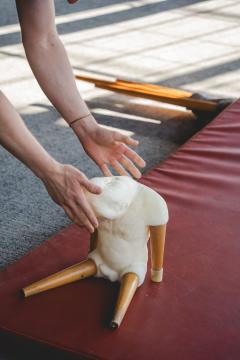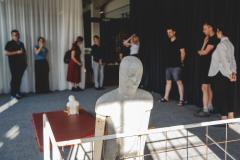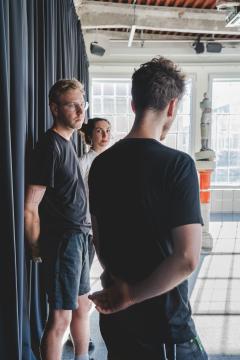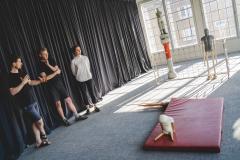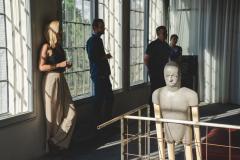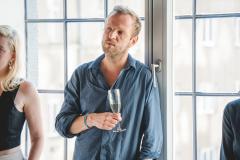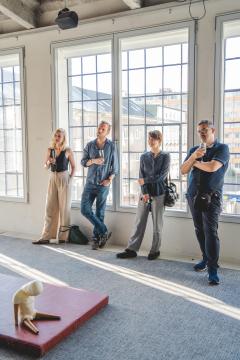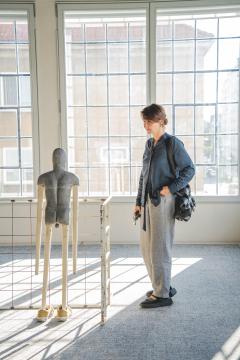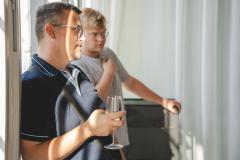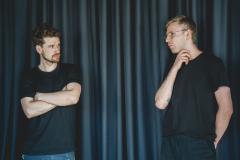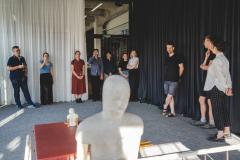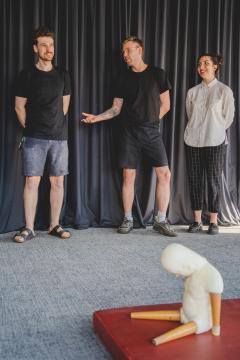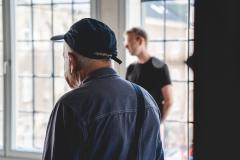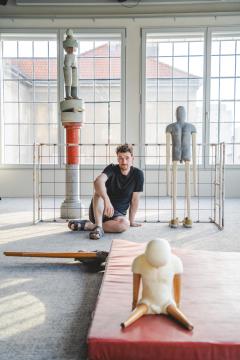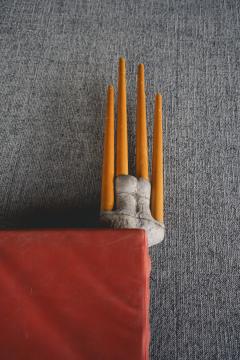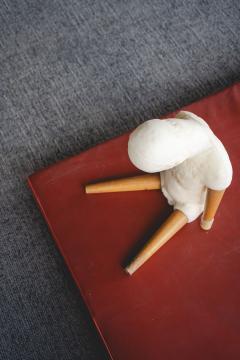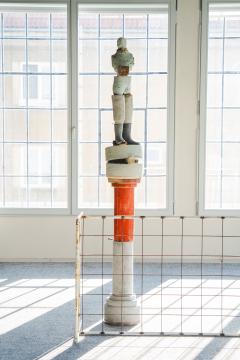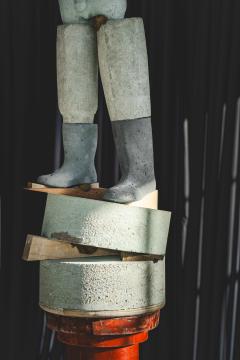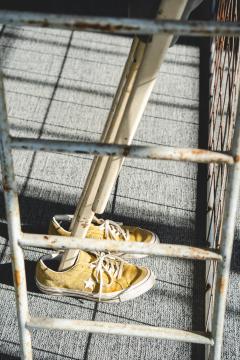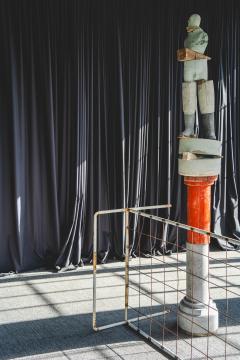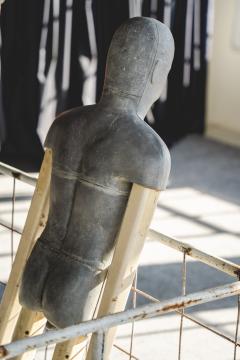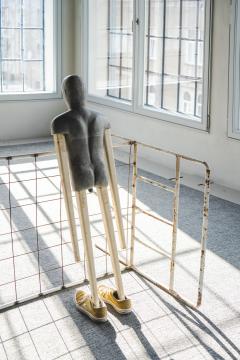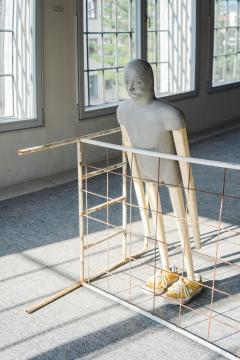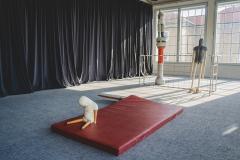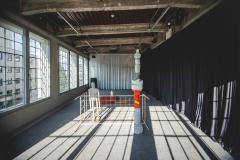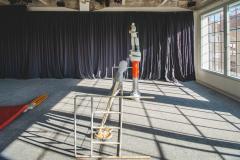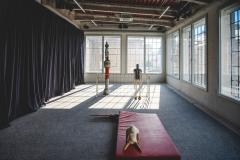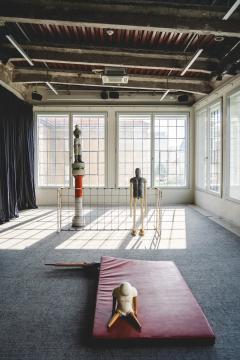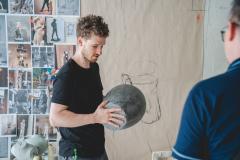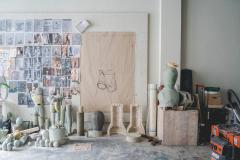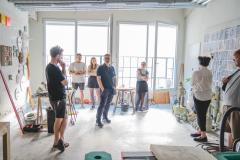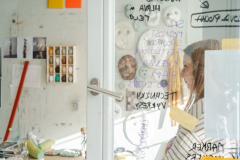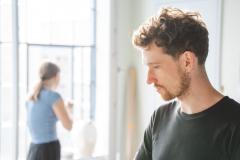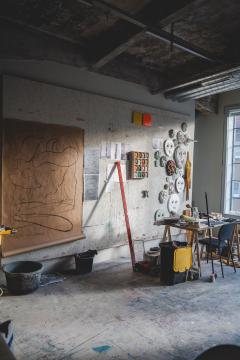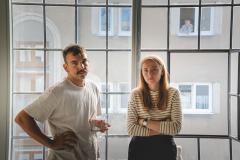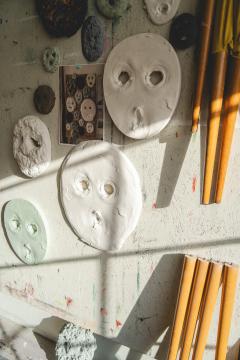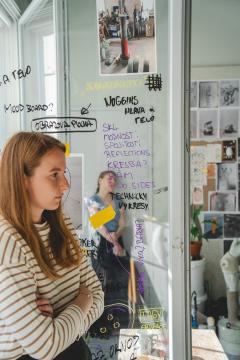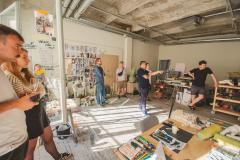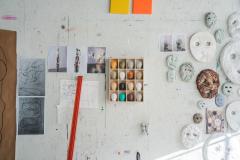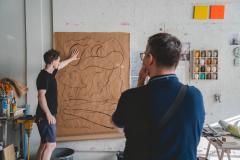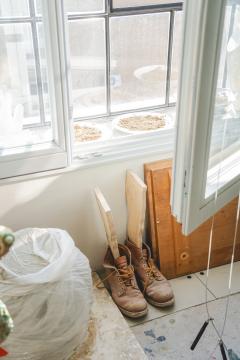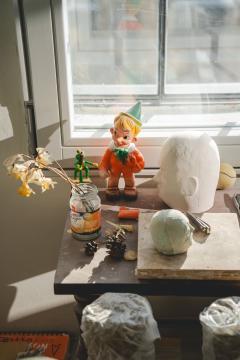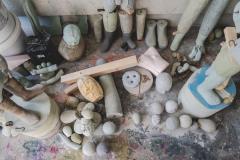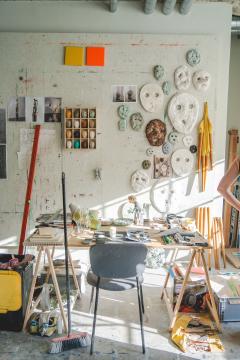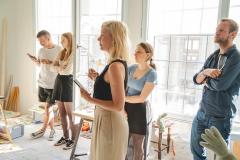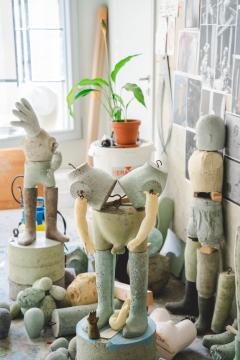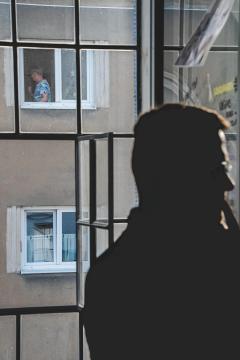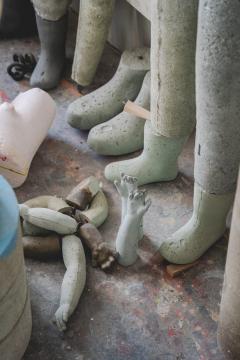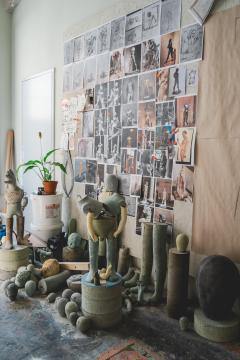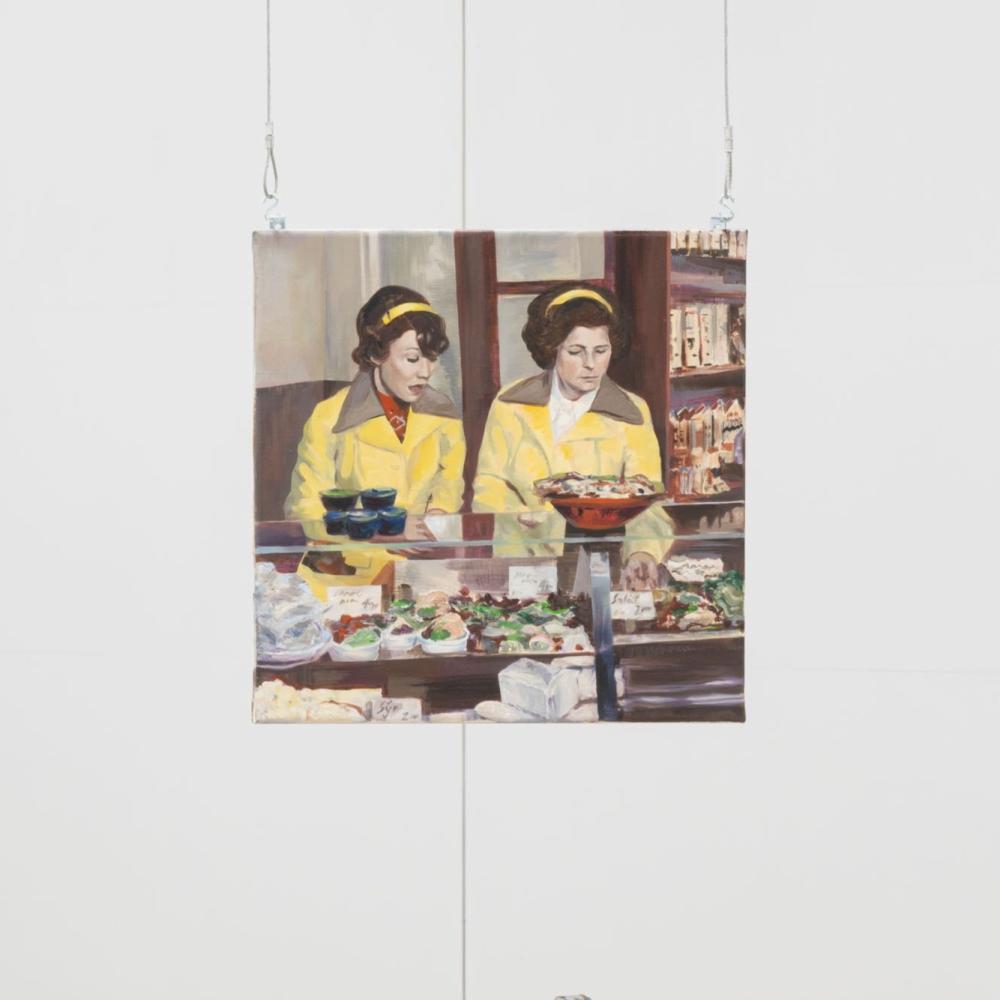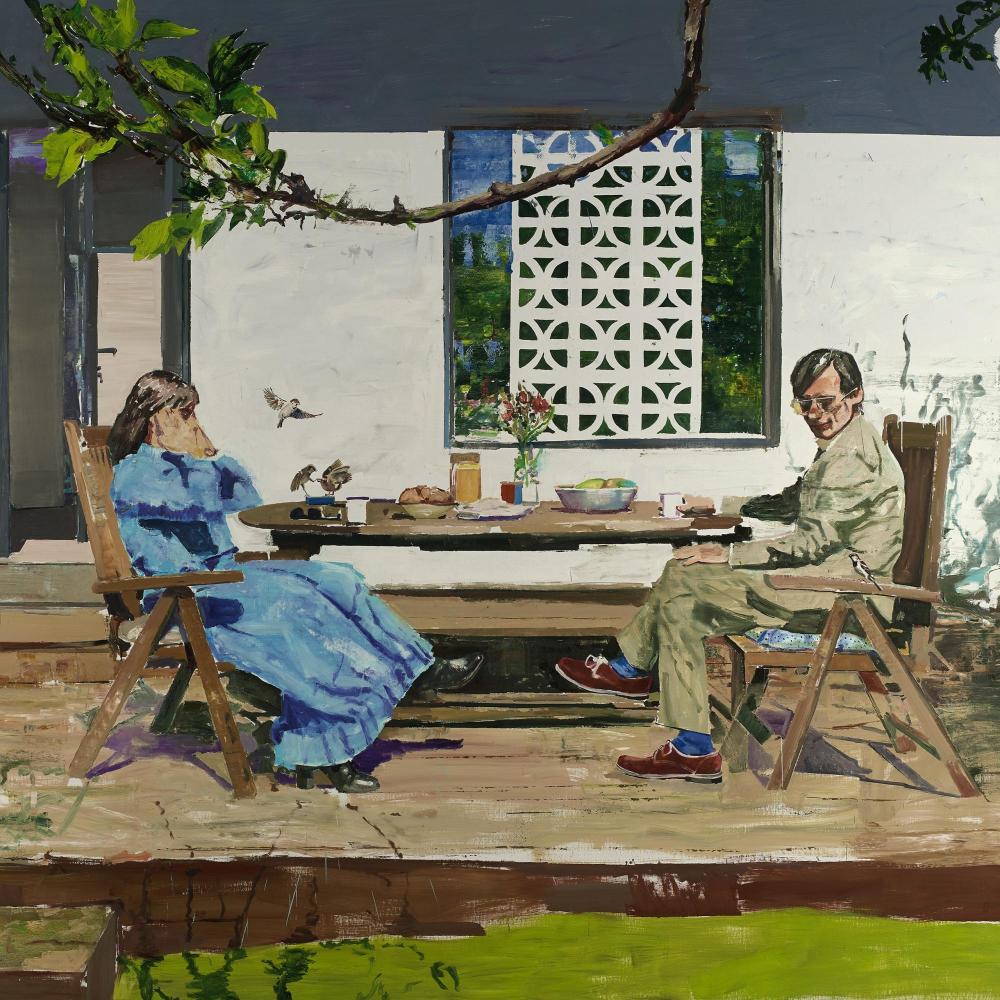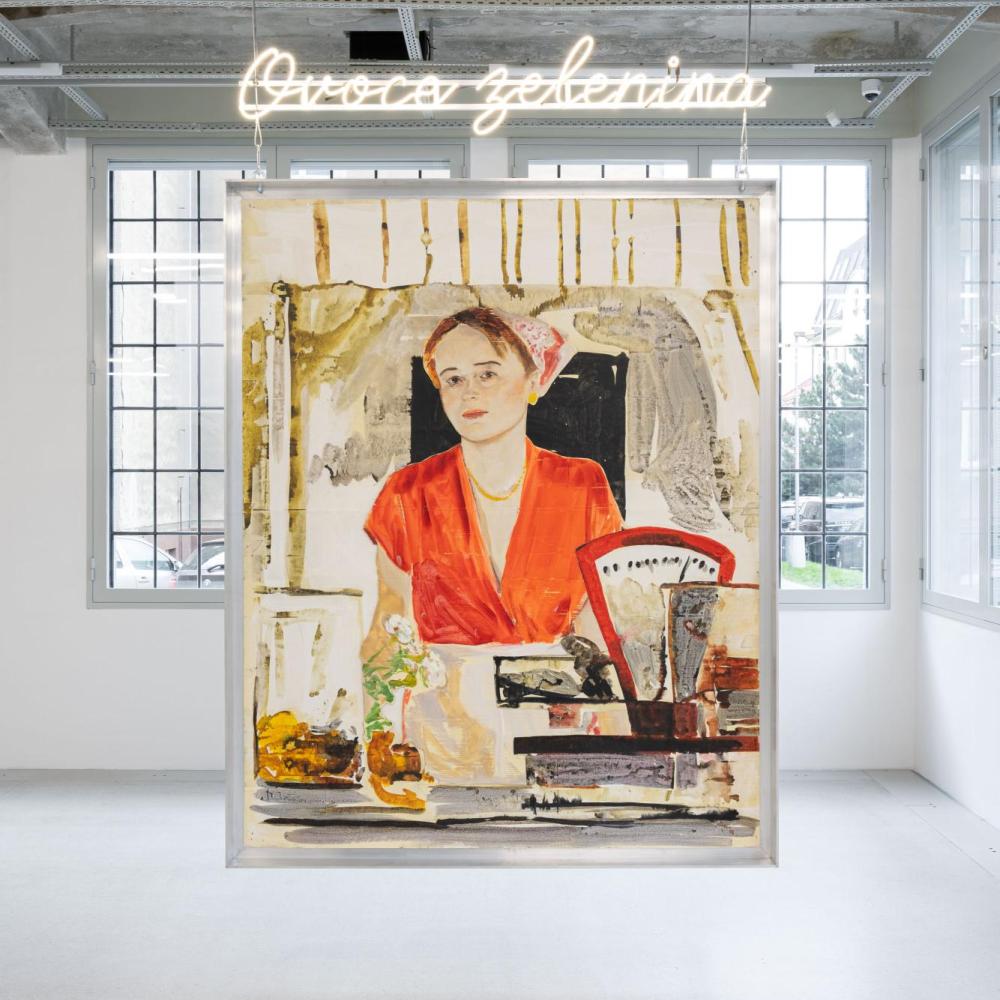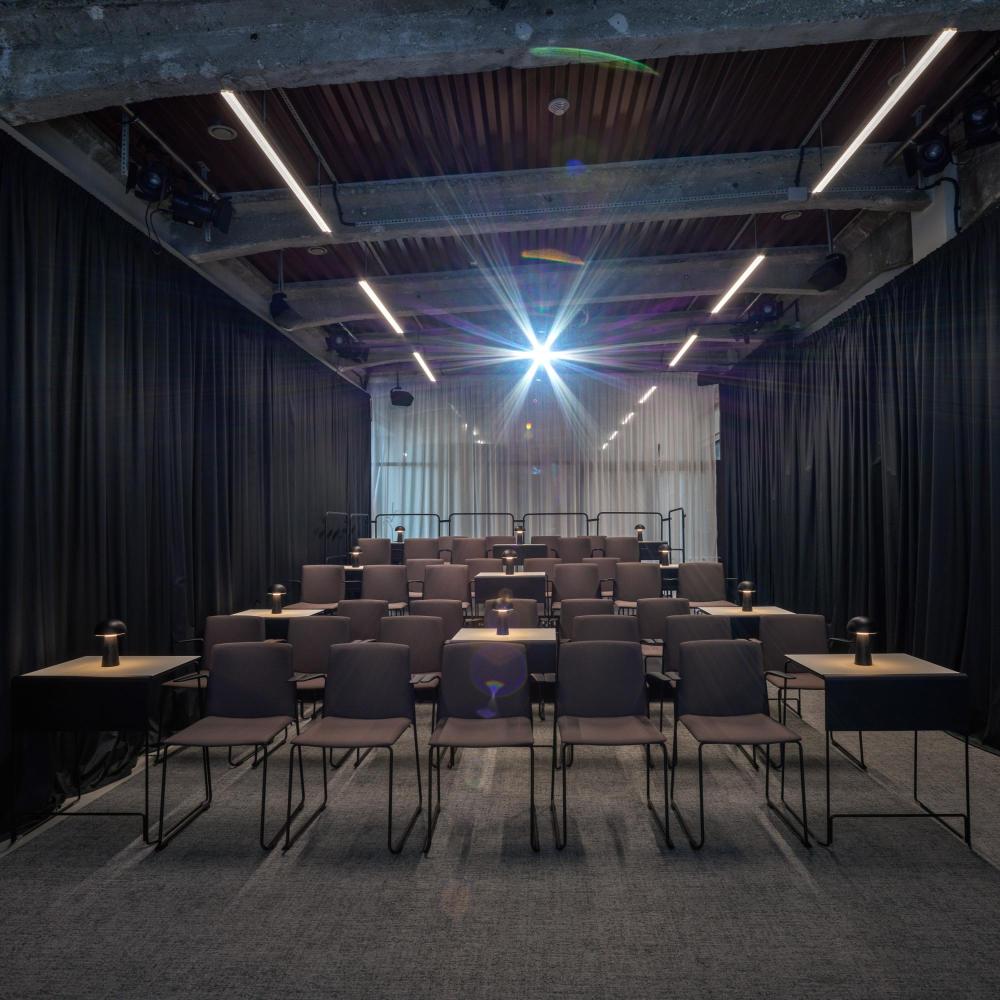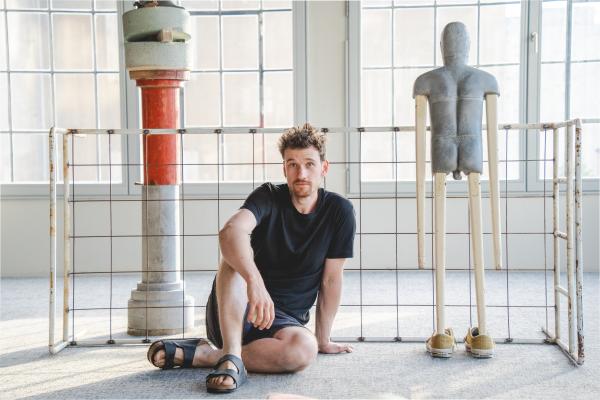
Many already know that art is ubiquitous in the Telegraph. Not only can we find it where we would traditionally look for it, in the gallery, but artwork covers the walls of the staircase leading to the upper floors of the building, or even in the cinema, which was recently turned into an exhibition space. The audience's seats were occupied by the young sculptor Patrik Adamec's paralyzed sculptures, the result of Patrik's two-month residency at the Telegraph.
The exhibition, titled Still Stuck - perhaps because of its more modest size - may not have struck the viewer as pompous at first. However, it was enough to stop for a moment and come closer, and the question "where did I get stuck?" began to hover over you. But before we get into the interpretation of meanings, let's try to collect clues in the form of the materials and elements used, which can reveal a lot. Adamec combines long-used objects of everyday life with recently created sculptures. Whether it's a second-hand mattress, worn-out sneakers or a rusty grille, we can say with certainty that these things were made years ago in obscure factories and have long since been forgotten. The use of ready-made elements such as mattresses and pieces of furniture is typical of Patrik Adamec. However, it is only by placing them in relation to the artist's creations that they are given another dimension. Another meaning. Another story.
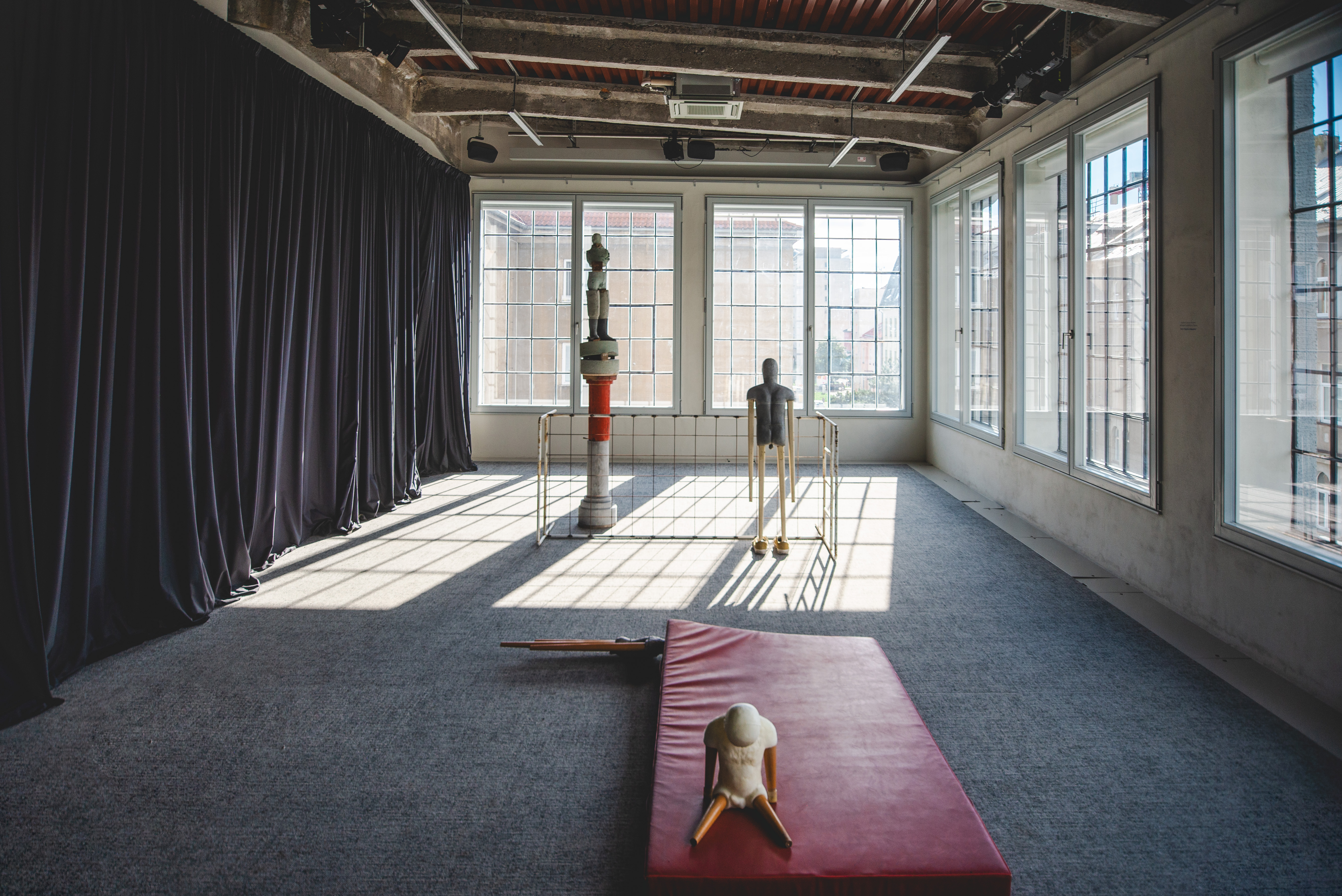
The torso and head of each actor in that scenery were of different origins, and had different characteristics - the closest to us, and the smallest participant, was modelled out of foam. The material Patrik Adamec often works with in reliefs that resemble paintings. However, the key function of this substance remains lightness. Moving on to the other sculptures, we noticed an increasing heaviness in their body composition and growing size, which led us to further question - are we looking at a static event anchored in time and place, or are all three figures one? If we saw the same person, does that mean that everything - including us - becomes heavier as time passes?
None of the figures made eye contact with us, it seemed, perhaps on purpose. The first figure was looking dejectedly at the ground, the second had his head hidden under a mat, and the third had his back turned to us completely... They weren't looking at us, or at each other. But someone was looking at them. The fourth, and last, figure, however, had quite a different constitution than the other three. At the same time, it was watching each of the other participants. It was different. We could have wondered about its uniqueness, which was indicated, among other things, by the pedestal from which she looked down on the other statues. Was this condescension really so justified? On closer examination, we found that the whole of the statue and the pedestal were again a combination of a ready-made object and a work that Patrik had created. It therefore had the same basis as all the others. The conclusion is up to the viewer - whether they choose sameness or diversity.
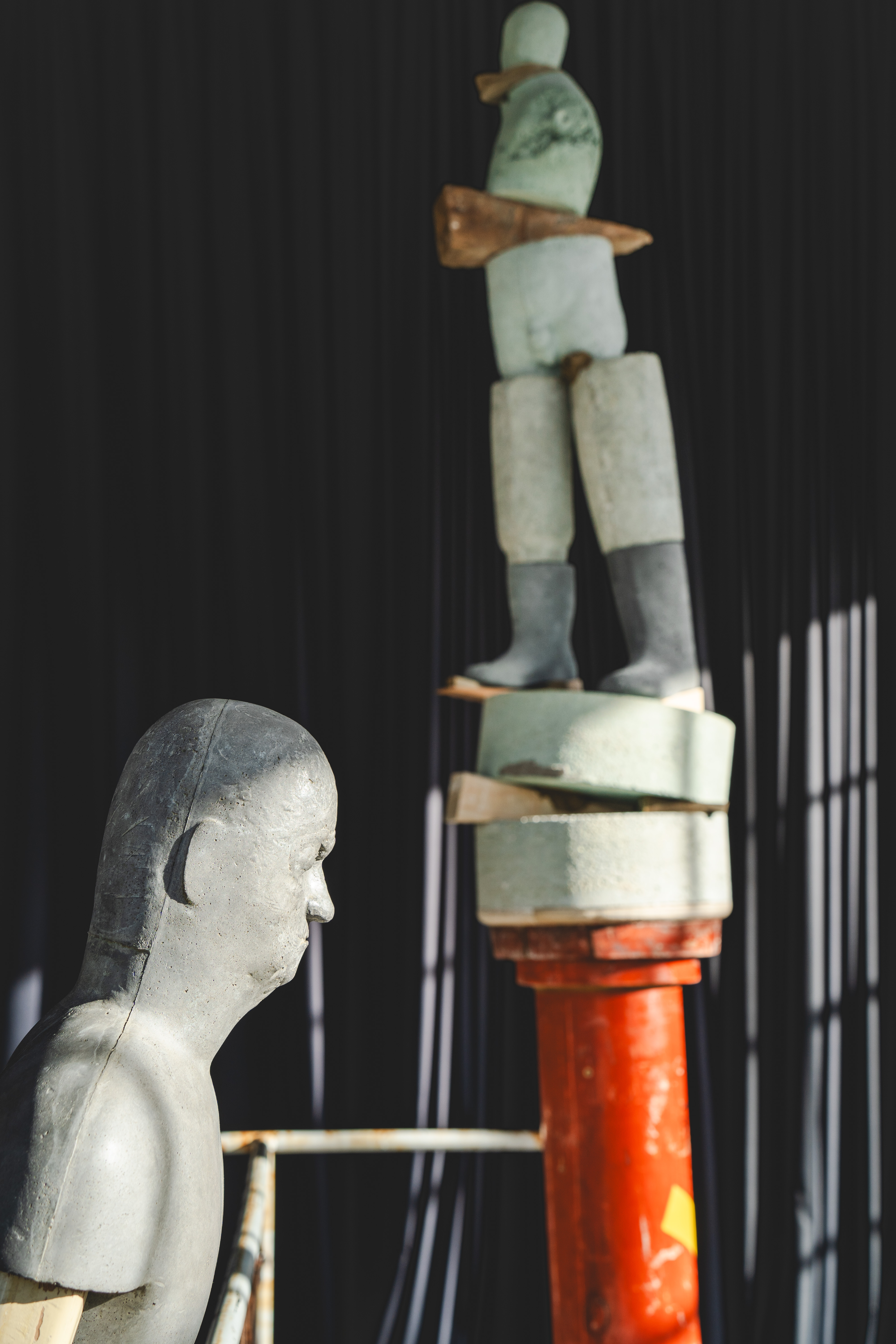
The search for meanings and explanations is inherent in humans. But what if the author, instead of communicating a specific message through the text, just playfully pieced together random fragments? He has thus created a room full of questions that we ourselves answer, often unconsciously projecting our own thoughts and experiences . So at the end, perhaps all that remains is the quiet laughter of the author, enjoying our efforts to find meaning where it has been deliberately blurred.
